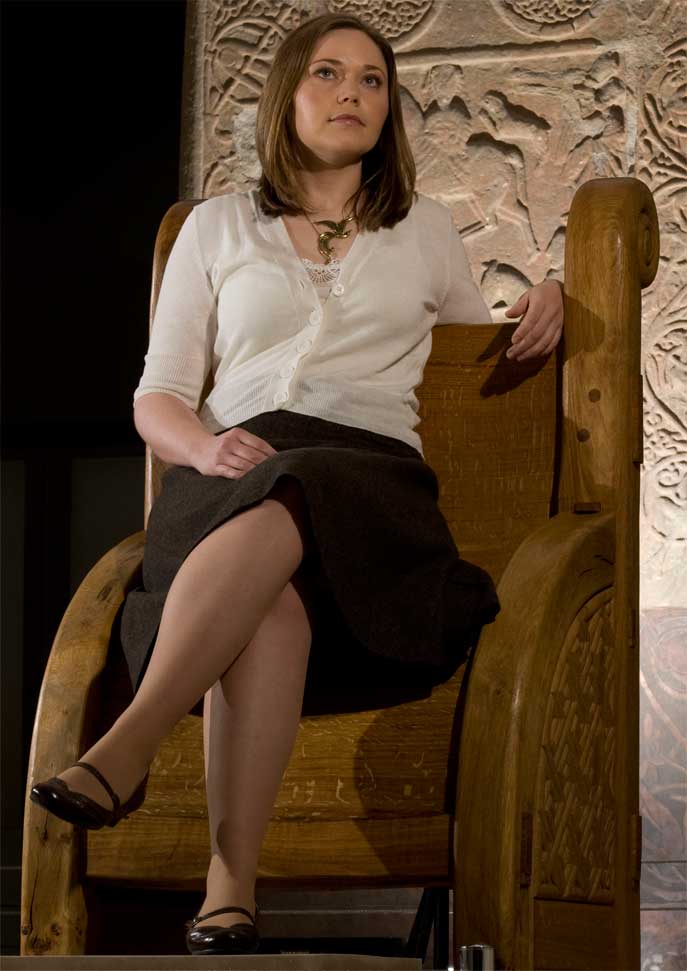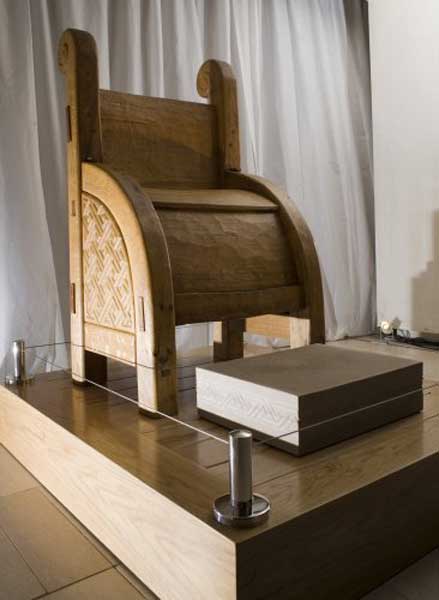PICTISH WARRIOR THRONE |
 |
|
The first Pictish throne to be built for a millennium has been unveiled by researchers investigating the lives of Scotland's most mysterious tribal people. The team spent a year crafting the oak of five Scottish trees into a design modelled on ancient carvings in a project that cost around £10,000. Raised thrones were important symbols of Pictish power for church leaders and kings, but none survive. The project at the National Museums of Scotland is part of a three-year research programme, sponsored by the Glenmorangie whisky company, and aims to improve understanding of Scottish history from 300AD to 900AD. |
|
 |
Eight or nine Pictish stone carvings show thrones but perhaps the best example is the Fowlis Wester. "It shows two of these thrones, essentially they are a pair," said researcher Alice Blackwell. "They had a number of distinctive features; the single curved arm and footpiece, and a very high seat – the figures shown are perching almost – and it had these curved terminals (endpieces]. We had to reconstruct that side view." Some of the features unique to Scotland were the foot block to stop people sliding off the high seat, otherwise you would have ended up with "your knees round your ears," she said. The curve of the seat would have forced a bishop or chieftain to sit forward and up. One possible piece of a Pictish throne, a curved terminal, or end-piece, of gilded wood, does survive in Ireland. There are stone thrones of the era from England and others on the continent, but none from Scotland. David Clarke, Keeper of Archaeology at National Museums Scotland, said: “Thrones were symbols of authority and power and as such would have been a very important part of Early Historic Scottish society that has hitherto been rather overlooked. |
“We are delighted to be able to work with National Museums Scotland to enable them to make exciting revelations about this period,” commented Paul Neep, The Glenmorangie Company’s Chief Executive. He continued: “At The Glenmorangie Company we are proud of our Scottish roots, particularly the ancient art and culture of the Picts which surrounds our Distillery in Ross-shire. “The Company has a natural association with National Museums Scotland as the museums’ collections include the eighth-century Hilton of Cadboll Pictish Stone, which was discovered near Glenmorangie House in Ross-shire and is the inspiration for the emblem that adorns Glenmorangie's bottles.” |
|
To learn more about the Picts CLICK HERE |
 |
© Paisley Tartan Army 2008-09
